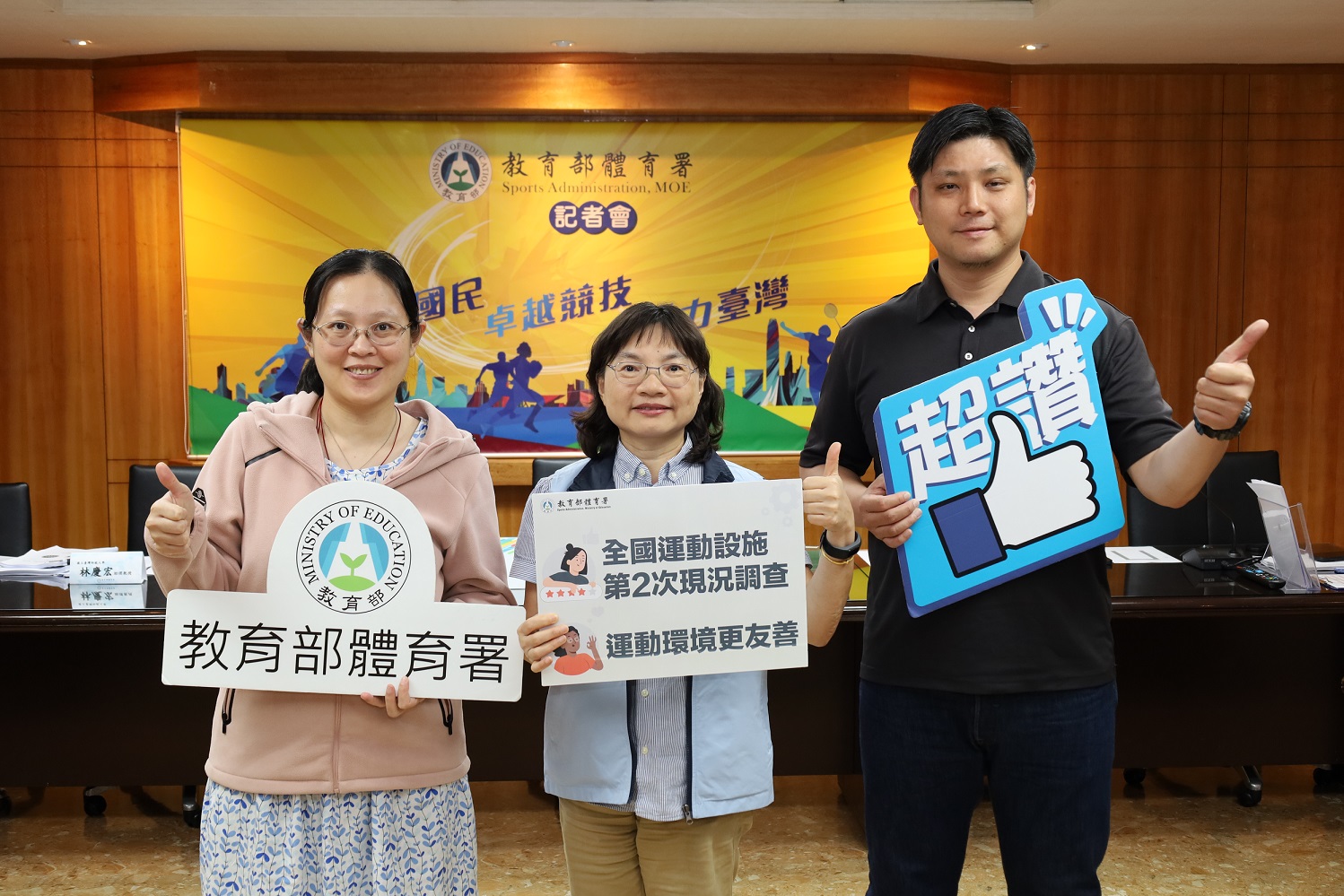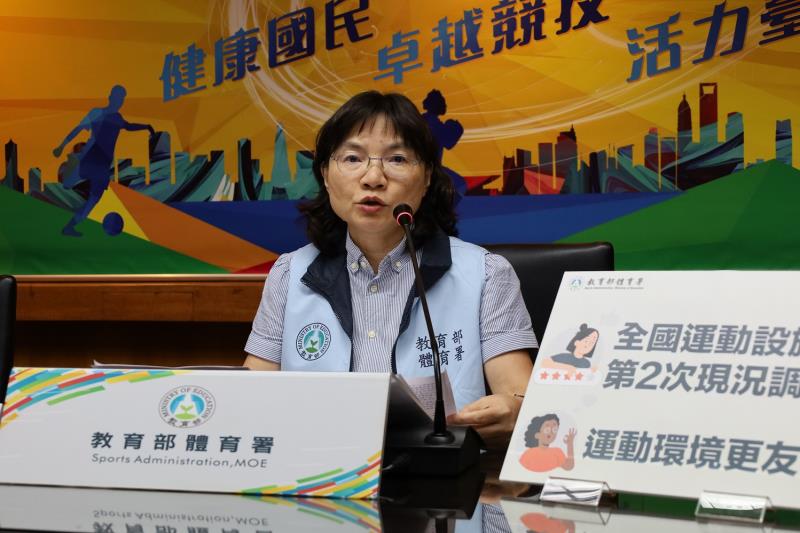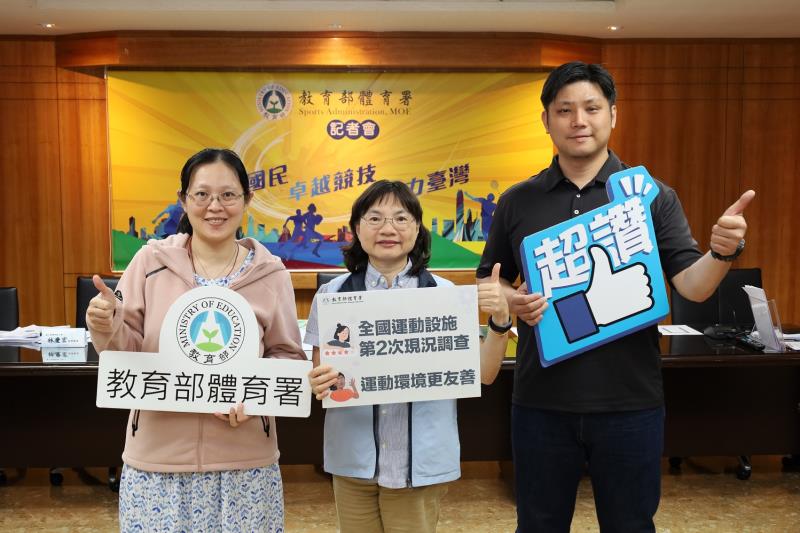The Second National Survey on Sports Facilities Reveals Significant Growth in Accessible Sports Facilities, the Exercising Environment Enhanced

The Sports Administration (SA) announced the latest survey results on the status of public sports venues and facilities nationwide on April 24. Over the past four years, the number of sports venues has significantly increased, with 73 new venues and 1,058 facilities added. Notably, the greatest growth has been seen in facilities for sports and leisure, highlighting the success of both the central and local governments in promoting national sports and the growing public interest in sports and recreation.
In the four years since the first national survey of public sports facilities was conducted in 2019, the SA has continued to support local governments in building and renovating these facilities through two initiatives under the Forward-looking Infrastructure Development Program: the "Project to Create High-Quality and Friendly Sports Facilities" and the "Project to Enhance the Sport for All Environment," with a total of approximately 400 projects funded. To assess the current status of sports facilities nationwide and provide the public with up-to-date information on venues, a comprehensive survey has been conducted across 22 counties and cities from October 2023 to October 2024. The survey content included basic information, ancillary facilities, barrier-free, gender-friendly and parent-child facilities, etc.
According to the survey, the total number of sports venues in 22 counties and cities nationwide reached 1,336, an increase of 73 from 1,263 in 2019. Among them, the top three counties and cities in terms of the number of added venues were Taichung City (an increase of 21), Taoyuan City (an increase of 20), and New Taipei City (an increase of 12). In addition, the total number of existing sports facilities reached 3,255, up by 1,058 from 2019, an increase of 48.16%. With the active promotion of governments at all levels, the sport for all environment has continued to improve, and the number of venues and facilities has increased significantly.
The top five cities and counties in terms of the number of sports venues are New Taipei City, with 197 venues (14.75%), Taichung City with 175 venues (13.10%), Taipei City with 142 venues (10.63%), Taoyuan City with 130 venues (9.73%), and Changhua County with 95 venues (7.11%). Among the various types of sports facilities, the leading three are basketball venues, totaling 837 (25.71%), multi-function dance classrooms with 268 (8.23%), and badminton venues with 236 (7.25%). Notably, the number of multi-function dance classrooms has surged from 7th place (79 venues) in 2019 to 2nd place (268 venues), achieving an impressive growth rate of 239.24%, surpassing swimming pools (2nd place in 2019) and tennis venues (3rd place in 2019); additionally, badminton venues have risen to the top three with a growth rate of 59.46%, reflecting the increasing popularity of these activities and the growing demand for facilities.
To provide a friendly sports environment, the SA has prioritized barrier-free, gender-friendly, and parent-child friendly facilities in its public construction projects. According to the latest survey, barrier-free facilities in public sports venues nationwide have shown an encouraging upward trend, supported by policy initiatives, with an overall growth rate exceeding 30%. Specifically, a total of 483 venues now feature barrier-free parking spaces, representing an increase of 176 from 2019 (307), marking a growth rate of 57.33%. As for barrier-free scooter parking spaces, the number increased from 96 to 185, with the highest growth rate of 92.71%. The availability of barrier-free ramps increased from 411 to 547, resulting in a growth rate of 33.09%. Additionally, there are now 189 barrier-free lifts, which signifies a growth rate of 46.51%. Notably, over 35% of sports venues nationwide now offer barrier-free toilets, totaling 689, while the number of barrier-free shower rooms has also seen a slight increase to 195, with an installation rate of 14.6%.
Significant progress has also been observed in gender-friendly and parent-child facilities. Currently, there are 182 sports venues with gender-friendly toilets, accounting for 13.62% of all venues nationwide. Additionally, the number of parent-child toilets has risen to 233, marking an increase of 90 since the 2019 survey, which reflects a growth rate of 62.94%. Although the number of gender-friendly and parent-child shower rooms has only seen a slight increase—mostly because they are primarily located in swimming pools—parking spaces designated for women and children have been included in legal requirements, resulting in a total of 216 such spaces, with a growth rate of 47.95%.
The above survey results show that the number of barrier-free, gender-friendly and parent-child friendly facilities has been increased simultaneously, fully demonstrating the importance that venue planners attach to people with disabilities, family users and gender-friendly spaces, bringing the overall sports environment more in line with the sports needs of people with special needs.
The SA reported significant growth in sports facilities across all levels based on their event handling classifications. Spectator-type (Class A) facilities, designed for domestic and international events, now total 90—an increase of 25 since 2019, reflecting a growth rate of 38.46%. Training and teaching-type (Class B) facilities have reached 265, up by 43, indicating a growth rate of about 20%. Leisure and promotion-type (Class C) facilities, essential for promoting sports for all, have surged to 2,900, a notable increase of 990 since 2019, representing a growth rate of 51.83%. This classification system enables various groups to select suitable venues according to their needs. The survey highlights that the significant budget support from governments at all levels over the past four years has greatly aided in promoting sports for everyone.
The SA emphasized its commitment to enhancing the quality of sports facilities nationwide. Following the future establishment of the Ministry of Sports, the SA will provide guidance to city and county governments to optimize various sports venues and improve ancillary spaces for special groups and sports companions. The focus will also be on developing emerging sports and creating diversified, community-based facilities. By improving accessibility and inclusivity, the SA aims to encourage sports participation, promote national health, foster a culture of sports for all, and strengthen Taiwan through sports.
Attachment(s) for download
- Table of Status of Public Sports Venues NationwideTable of Status of Public Sports Venues Nationwide.docx


